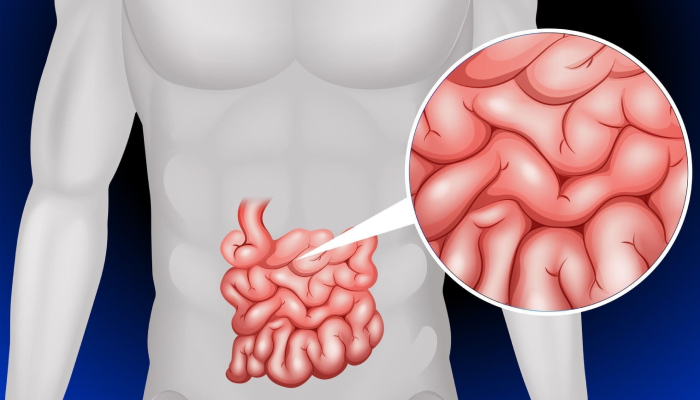What is Meckel's Diverticulum?
Meckel’s diverticulum is an outpouching or bulge in the lower part of the small intestine. The bulge is congenital (present at birth) and is a leftover of the umbilical cord. Meckel’s diverticulum is the most common congenital defect of the gastrointestinal tract. It occurs in about 2% to 3% of the general population.
People can live their whole lives without ever knowing they have Meckel’s diverticulum. The condition is equally common among males and females, but males are two to three times more likely to have complications.

What Causes Meckel's Diverticulum?
Meckel’s diverticulum occurs in a fetus early in the pregnancy. Normally, the vitelline duct, which connects the growing fetus with the yolk sac, is absorbed into the fetus by the seventh week of the pregnancy. When the vitelline duct is not fully absorbed, a Meckel’s diverticulum develops. A Meckel’s diverticulum may contain cells from both the stomach and pancreas. Cells from the stomach can secrete acid, which can cause ulcers and bleeding.
What Are The Symptoms of Meckel's Diverticulum?
Symptoms of Meckel’s diverticulum usually occur during the first year of a child’s life, but can occur into adulthood.
- Gastrointestinal bleeding (which can be seen in the stool).
- Abdominal pain and cramping.
- Tenderness near the navel (belly button).
- Obstruction of the bowels, a blockage that keeps the contents of the intestines from passing. This can cause pain, bloating, diarrhea, constipation, and vomiting.
- Diverticulitis (swelling of the intestinal wall).
How is Meckel's Diverticulum Diagnosed?
Meckel’s diverticulum can be difficult to diagnose. Many of the symptoms, such as vomiting, abdominal pain, and tenderness, can occur in several different conditions.
- Technetium scan: This test is a scan. Radioactive technetium is injected into the body. This substance is absorbed by stomach cells in the diverticulum and can be detected by a special camera.
- Colonoscopy: In this test, a small, flexible tube with a camera on the end is inserted into the rectum and colon to look for blockages and the cause of bleeding.
- Wireless capsule endoscopy: For this test, the patient swallows a small camera that can detect sources of bleeding in the small intestine. If your child is too young to swallow a pill, it can be placed in the stomach while your child is asleep.
How is Meckel's Diverticulum Treated?
Many adults who have Meckel’s diverticulum never have symptoms. They learn they have the condition only after it is noticed during surgery or during tests for another condition. In this case, Meckel’s diverticulum usually does not have to be treated. Surgery to remove the diverticulum may be recommended if bleeding develops. During this procedure, the Meckel’s diverticulum and surrounding small intestine are removed and the ends of the remaining intestines are sewn together. This can be done either through open abdominal surgery or laparoscopically (a narrow tube with a camera is inserted through a small incision, and the Meckel’s diverticulum is repaired through another small incision). Your physician can recommend the best approach based on your child’s symptoms, age, and general health.
Book Your Appointment Today
Book your appointment with Dr. Ujwal Zambare he is having 12 years of experience in Gastro-intestinal surgery, oncology, minimally invasive surgery and Liver, Pancreas, Biliary tract surgery.

Dr. Ujwal Zambare
MBBS, MS (General Surgery), DNB (Gastrointestinal Surgery)
Fellowship in Minimal Access Surgery
Copyright © 2021. Dr. Ujwal Zambare – Liver, Pancreas, Biliary Tract Surgery Specialist in Pune. | All Rights Reserved.
All Text and Images is for information of Patients and Public and doesn’t replace medical practitioners advice. Visit doctor for medical advice.



